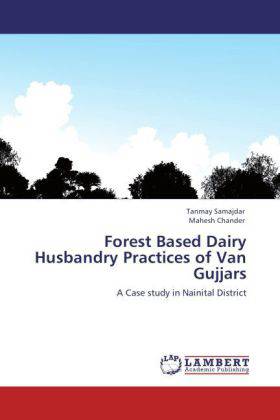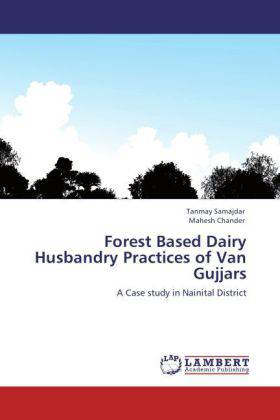
Je cadeautjes zeker op tijd in huis hebben voor de feestdagen? Kom langs in onze winkels en vind het perfecte geschenk!
- Afhalen na 1 uur in een winkel met voorraad
- Gratis thuislevering in België vanaf € 30
- Ruim aanbod met 7 miljoen producten
Je cadeautjes zeker op tijd in huis hebben voor de feestdagen? Kom langs in onze winkels en vind het perfecte geschenk!
- Afhalen na 1 uur in een winkel met voorraad
- Gratis thuislevering in België vanaf € 30
- Ruim aanbod met 7 miljoen producten
Zoeken
Forest Based Dairy Husbandry Practices of Van Gujjars
A Case study in Nainital District
Tanmay Samajdar, Mahesh Chander
Paperback | Engels
€ 63,45
+ 126 punten
Omschrijving
There are millions of people all over the world who live in and rely on the forest. Some of the communities are exclusively living on livestock resources. Given the importance of the forest and more so the livestock raising in the forest by pastoralists, a study entitled Forest based dairy husbandry practices of Van Gujjars : A case study in Nainital district , was taken up during 1999-2000 in Tanda forest range of Nainital district. The case study method with an anthropological approach was followed. The system of livestock production was unique in the sense that it was totally dependent on forest resources with very limited external inputs. Gujjars preferred natural breeding of the buffaloes but had negative attitude towards inbreeding . The buffaloes were maintained on forest grazing, tree fodder, straws and with little concentrate supplementation. The production level of the buffaloes was good. The animals were healthy and well adapted to the system while occasionally veterinarians advice was sought by them, in case of emergencies. The milk was sold to the middlemen at a considerable rate. This low input - low output system of buffalo production appeared to be sustainable.
Specificaties
Betrokkenen
- Auteur(s):
- Uitgeverij:
Inhoud
- Aantal bladzijden:
- 100
- Taal:
- Engels
Eigenschappen
- Productcode (EAN):
- 9783847325352
- Verschijningsdatum:
- 27/12/2011
- Uitvoering:
- Paperback
- Afmetingen:
- 152 mm x 229 mm
- Gewicht:
- 159 g

Alleen bij Standaard Boekhandel
+ 126 punten op je klantenkaart van Standaard Boekhandel
Beoordelingen
We publiceren alleen reviews die voldoen aan de voorwaarden voor reviews. Bekijk onze voorwaarden voor reviews.









